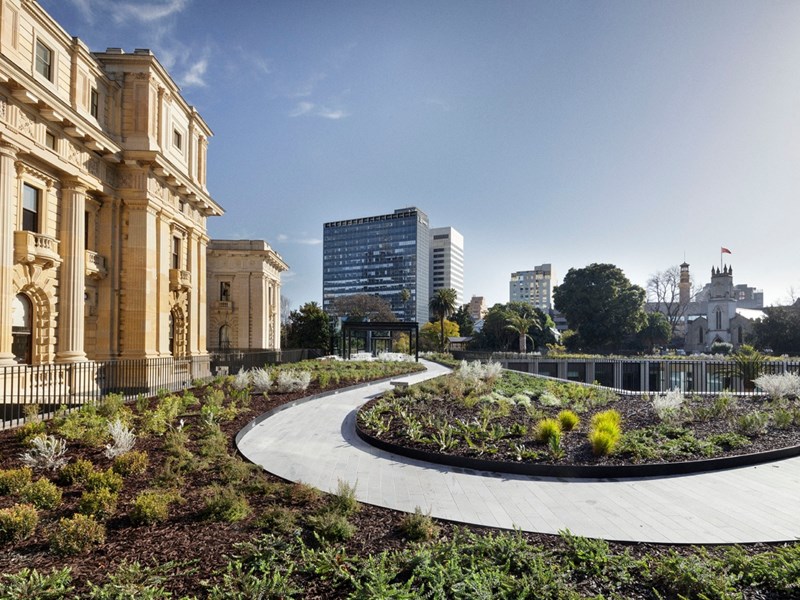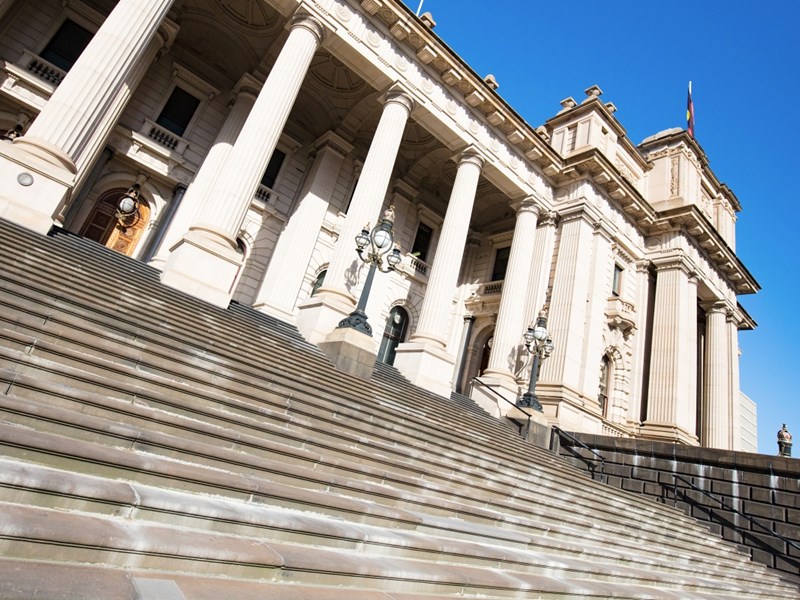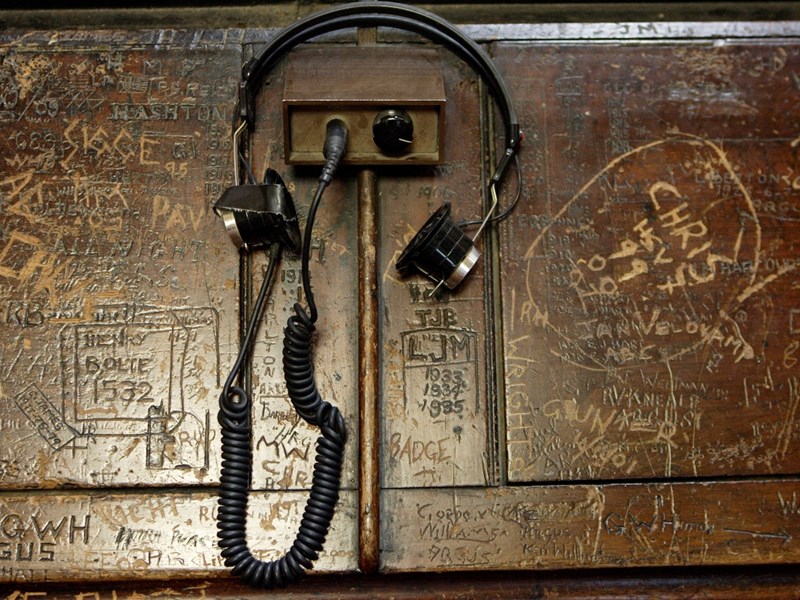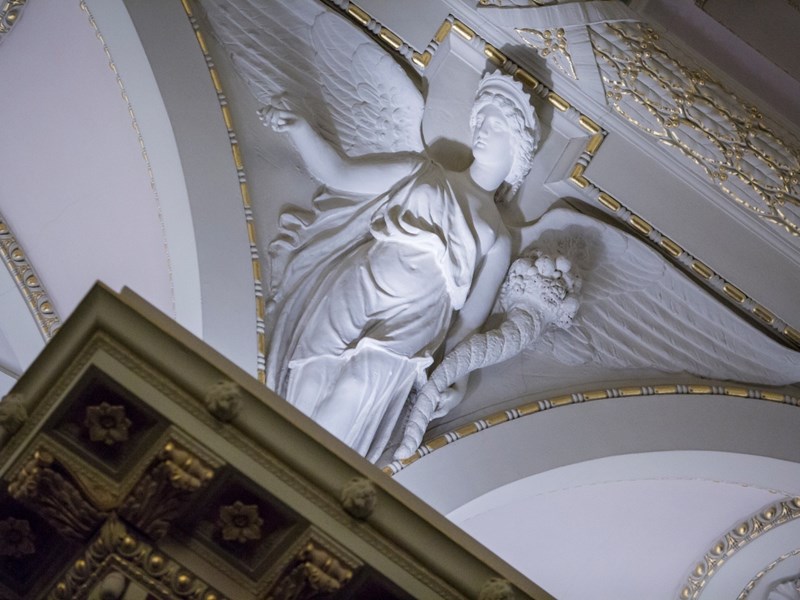- Home /
- News /
- General news
Classic forms meet contemporary functions
10 November 2022

Built in a bygone era, Victoria’s Parliament House is adapting to the challenges of being home to a modern democracy.
When Victoria was established in 1851, separating from the colony of New South Wales, the parliament building became one of its early civic landmarks, a grand edifice commanding an outstanding view of Melbourne as the gold rush boomed.
Constructed in stages from 1855, Victoria’s Parliament once met the gaze of the Supreme Court in the distance but is now nestled between skyscrapers and gardens with only a direct view down Bourke Street offering a glimpse of the city Melbourne has grown into.
A work in progress over 167 years, a building from colonial times, that has traversed generations and centuries, finds itself confronted by contemporary needs and expectations while retaining its status as one of the state’s most significant heritage assets.
'The grand staircase and the big colonnade, that Victorian confidence is fantastic,' says award-winning architect Peter Elliott.
It’s a 'civic statement on the street', he says.
The west façade was inspired by Roman posturing which was popular in the 19th century. Ornamental lamps and an imposing colonnade embody solidarity while remaining welcoming when the public visits for tours.

Today the front entrance makes for great photo opps for everyone from activists to brides and tourists alike.
Accessibility is an obstacle, however, with the multi-tiered steps requiring some visitors to enter at the back of the building, a challenge that remains part of that work in progress.
'The problem with parliament now is that it doesn’t have an open exhibition centre or visitor’s centre,' says Elliott, highlighting that public inclusion is a topic to focus on going forward.
Security doors and metal detectors are a necessary modern addition to the entrance, with heightened awareness of the precautions required following incidents at legislatures of other countries.
Once inside, the vestibule, Queen’s Hall, library and legislative chambers serve as the key areas providing functionality to the building, with members of parliament and the public spending much of their time in one of these rooms.
Portraits of past Premiers greet visitors when entering parliament’s largest room where in ancient garb, holding a sceptre and wreath Queen Victoria’s marble statue oversees guests. Over the years carpets have been installed over the tiled floor in Queen’s Hall to reduce echo.
Originally called the Grand Hall, its name was updated to celebrate Queen Victoria’s golden jubilee. The precedence of name change showcases the ability for the building to remain current, no matter the outcome of any constitutional adjustments that may or may not be considered in the future.
Stepping forward into the library, thousands of books and reports can be seen lining its shelves. A hub of knowledge helping to keep parliamentarians informed to support their policy and legislative work.
Layers of gold leaf, glinting in the light of a chandelier retired here from one of the legislative chambers, reflect the state’s prestige and wealth of the past gold rush era. Brass fireplaces have been placed out of commission in accordance with today’s fire safety standards.
History is all around, with parliament’s first ceremonial mace hanging as an ornament atop the library’s exit, among various artefacts rotating through the upstairs gallery, named after Alfred Deakin, a Victorian MP who went on to prime ministerial office. An enduring view of Saint Patrick’s Cathedral, intentionally framed through the north window, promotes a reflection on one’s own morality with each gaze.
On either side of the central area are the Legislative Assembly and Legislative Council chambers, of equal importance and independent of each other, with their distinct colours reflecting links to borrowed parliamentary traditions.
A curious feature of the lower house can be found along the desktops lining the press gallery above the Speaker’s chair. The desks have been graffitied by journalists for decades, encapsulating the different eras parliament has endured and what has been left for others to see.

The upper house chamber is by far the more elaborate, with allegorical figures that appear as angels and that were chosen to represent Victoria’s most sacred values: Justice, Mercy, Architecture; Fame (or Glory); Wisdom, Unity, History (or Truth); and Plenty (or Abundance).
Unity, formerly known as Liberty, once held a broken chain before renovators in the first quarter of the 20th century believed it to be broken and reconnected it. While the values retain relevance, the tale of Unity shows that these values and their meanings can be given a contemporary makeover. The symbolism of a reunified chain has created a new meaning today, stemming from pure happenstance but accepted as genuine ingenuity, nonetheless.

Behind the main building the addition of a new annexe stands as a testament to modernity in stark contrast to the grandeur of Parliament House. As a mark of respect to the grand old dame, the new building is sunken to retain the original vista.
Built in a pincer shape, the annexe serves to ensure members can rush back to the legislative chambers in four minutes to beat the bells when votes are called. The 102 offices across two floors provide contemporary work environments needed to overcome cramped and unsatisfactory spaces in the main building that decades of MPs had endured and that are now being renovated to create more usable facilities.
Corridors leading through the annexe create neighbourhoods where members have naturally gravitated towards colleagues. But political realities require a degree of separation between the various groupings that make up the parliament.
'We had to understand that the political world this was meant to service, it’s not all cosy-cosy,' says annexe architect Peter Elliott.

The priorities of the 21st century, themes like sustainability, are baked into the foundations of the new annexe. There are features like a naturally conditioned temperature system, insulated by a rooftop garden, which rests as a testament of innovation and the green-focused ambitions of Australia’s future, with opportunities for Victoria to pave the way.
It’s a shift in focus that reflects the evolution of Victoria’s Parliament House as it adapts to the times we live in and that lie ahead.
Photo at top: John Gollings
About the Author

Zak Wheeler
A participant in the Parliament Express program conducted by the Parliament of Victoria in partnership with Express Media. The program provided mentoring and engagement experiences, leading to a series of articles written by young Victorians for the Victorian Parliament's website.